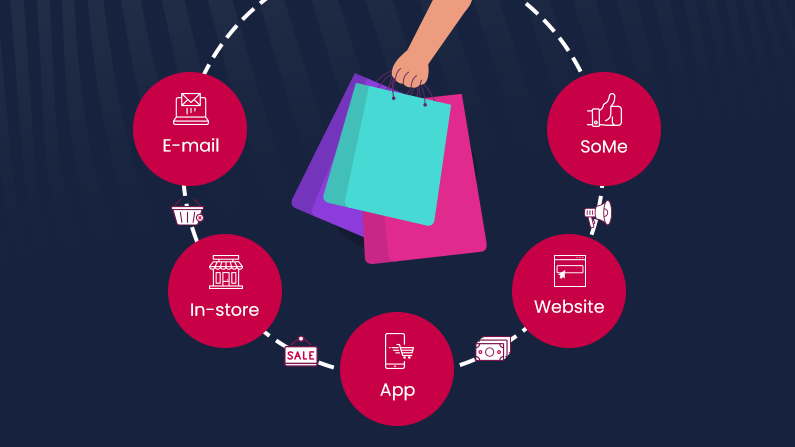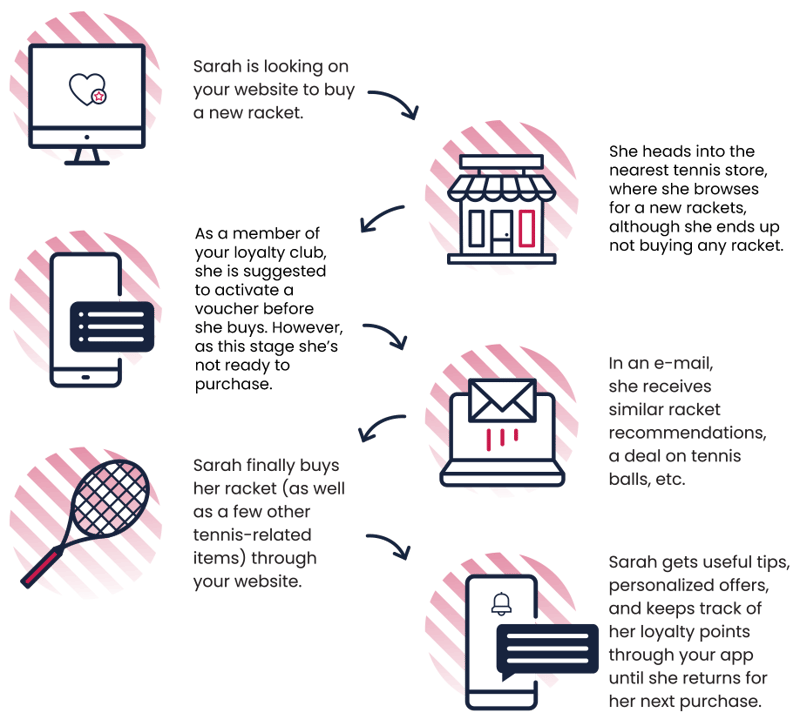What is Omnichannel? And how is it different from multichannel?
Apr 17, 2024 |

What is omnichannel? And what is the difference between omnichannel and multichannel? You may have heard these terms before, and you might even have used them interchangeably.
Especially omnichannel is a hot topic and a buzzword. But we don’t want it to be. Because this term doesn’t just cover a trend, but the new standard for how you meet your customers - something that's more than a one-hit-wonder.
So, let’s cover the basics! And while we’re at it, let’s take a look at the barriers to omnichannel and whether they apply to you. After this read you’ll be well prepared to take the first step towards the most important marketing strategy in 2024 – or take the next step, if you’ve already on your way.
First off...
What is omnichannel?
In short, omnichannel happens when a brand manages to create a coherent and engaging experience across platforms.
Ecommerce has developed at a rapid pace, and customers have more touchpoints to interact with than ever before.
It’s about being present whenever and wherever the customers need you, no matter if they interact with your app, your pop-up store, or your customer service chat. These interactions should feel coherent on every platform – and the wider your reach, the more potential, loyal customers you will meet.
But how is it different from multichannel?
An omnichannel brand always has multiple channels. It’s in the name. But a brand owning multiple channels are not necessarily omnichannel.
Confused?
Omnichannel is essentially a step up from multichannel. Whereas multichannel refers to a brand owning multiple, siloed channels that take separate actions with separate goals and outcomes, omnichannel is all about connecting these channels and sharing KPIs across them.
You may create amazing in-store campaigns or mesmerizing e-mail marketing content. But if these elements are not synchronized, the experience will feel much less engaging to your visitor.

It’s also a question of data
Your different platforms collect very different types of customer data; The information you gain through an in-store purchase is much different from the digital footprints your visitor leaves behind when scrolling your site. If this data isn’t collected and connected, it will be siloed, and its potential goes to waste. And you will be one step further from achieving the omnichannel experience that is a must in today’s world.
Did you know that the best audiences for e-mail and paid marketing are also data-based?
Check out our Top 12 omnichannel audiences that you can't live without as a marketer.
In other words, you need to utilize the knowledge and data you gather from one channel and use that information in other channels.
Let’s take an example
The best way to explain omnichannel is by looking at a typical customer journey. Except that’s not possible, because every brand has its own “typical” customer journey, which needs to be studied to create the foundation for your brand’s strategy.
So, here’s an extremely simplified example of a transaction between a consumer and a sportswear brand.

As you can see, a well-orchestrated omnichannel experience runs through every interaction with a brand – also beyond when the purchase takes place.
But as with any new project, it’s a marathon, not a sprint. And if you’re overambitious and want to do it all at once, you’re more likely to not get your individual channels going properly – or not getting started at all.
Plantorama is a brand taking many, small steps towards omnichannel. They launched a Click&Collect option to move online customers into the store and they have a successful live-shopping concept with their best gardening tips. In-store customers can even scan plants to get more information on the plant they’re eyeing – while Plantorama gets valuable customer information in return.
There’s no question...
...Omnichannel is the marketing strategy for 2024. There’s lots of ground to cover, and it takes some resources to understand it all.
Well, don’t worry. We’ve put together a guide for you that goes a little more in-depth – and gives you a few tools to get started.
Get the guide here.
Related Content
You might also like
Let us show you what you can achieve with premium personalization


A Raptor expert can share more about the product and answer any questions you have.

